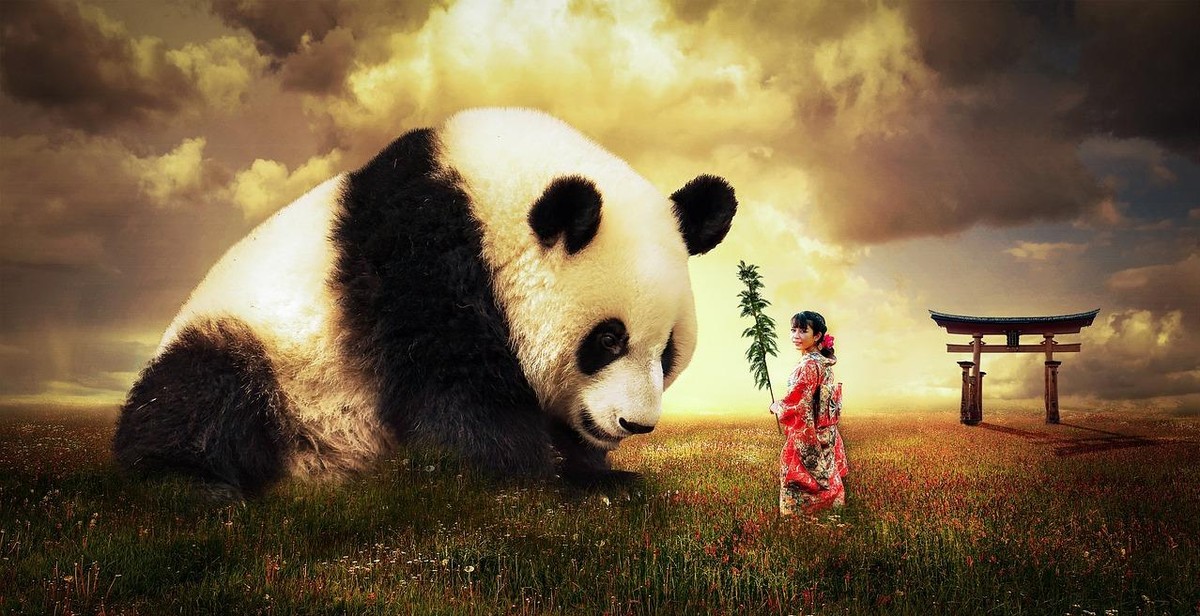How to Capture Stunning Photos of Giants: Photography Tips and Techniques
As a professional photographer with over 10 years of experience, I have had the opportunity to capture stunning photos of some of the world’s largest creatures. From elephants to whales, capturing the beauty and majesty of these giants requires skill, patience, and the right equipment.
The Importance of Preparation
Before heading out to photograph giants, it’s important to do your research and prepare accordingly. This includes understanding the behavior and habitat of the creature you’re photographing, as well as scouting out the best locations and times of day for optimal lighting conditions.
The Right Equipment
The right equipment is crucial for capturing stunning photos of giants. This includes a high-quality camera with a fast shutter speed, a telephoto lens for zooming in on distant subjects, and a sturdy tripod for stability.
Additionally, it’s important to have the right gear for the environment you’ll be shooting in. For example, if you’ll be photographing in a wet or humid environment, you’ll need to ensure your camera and lens are protected from moisture.
Techniques for Capturing Stunning Photos
There are several techniques that can help you capture stunning photos of giants. These include using a shallow depth of field to blur the background and focus on the subject, capturing the creature in motion to add a sense of drama and energy, and using natural elements such as water or foliage to add interest to the composition.
By following these tips and techniques, you’ll be well on your way to capturing stunning photos of the world’s largest creatures.

Understanding the Subject
Capturing stunning photos of giants can be a daunting task, especially if you are not familiar with their habitat and behavior. As a professional photographer with years of experience in wildlife photography, I have learned that understanding the subject is the key to capturing breathtaking images.
Researching Giants
Before embarking on a photography expedition to capture giants, it is essential to conduct thorough research on the subject. Giants come in different species, and each has unique characteristics and behavior. For instance, elephants are gentle giants that roam the savannas of Africa, while grizzly bears are massive creatures that inhabit the forests of North America. Understanding the differences between these giants will help you prepare adequately for your photography expedition.
Researching giants will also help you understand their conservation status and the threats they face. This knowledge is essential in helping you capture images that tell a story and raise awareness about the need to protect these magnificent creatures.
Understanding their Habitat
Giants inhabit different habitats, and understanding their environment is crucial in capturing stunning photos. For instance, elephants are found in open savannas and grasslands, while gorillas inhabit dense forests. Understanding the habitat will help you choose the appropriate camera equipment and lenses to use, as well as the best time of day to capture images.
It is also essential to understand the behavior of giants in their habitat. For instance, elephants are most active during the early morning and late afternoon, while gorillas are most active during the day. Understanding these behavioral patterns will help you position yourself in the right place at the right time to capture stunning images.
- Conduct thorough research on the subject
- Understand the differences between giant species
- Understand the conservation status and threats faced by giants
- Choose appropriate camera equipment and lenses based on their habitat
- Understand the behavioral patterns of giants in their habitat

Choosing the Right Gear
When it comes to capturing stunning photos of giants, choosing the right gear is essential. Here are some tips to help you select the best camera, lens, tripod, and stabilization for your photography needs.
Camera and Lens Selection
The camera and lens you choose will greatly impact the quality of your photos. For wildlife photography, it’s important to have a camera with a fast autofocus system and a high burst rate. Look for a camera with at least 10 frames per second and a good ISO range for low light situations.
When it comes to lenses, a telephoto lens is a must-have for capturing photos of giants from a distance. A 70-200mm or 100-400mm lens is a great starting point, but you may want to invest in a longer lens if you plan on photographing animals from a greater distance.
Tripods
A sturdy tripod is essential for wildlife photography, as it will help stabilize your camera and prevent blurry photos. Look for a tripod that is lightweight and easy to carry, but also sturdy enough to support your camera and lens. Carbon fiber tripods are a great option for their strength and light weight.
Stabilization
In addition to a tripod, you may also want to consider other forms of stabilization, such as a monopod or gimbal. A monopod is a great option for photographers who need to move quickly and want to reduce camera shake, while a gimbal is ideal for photographers who need to pan and tilt their camera smoothly.
| Camera and Lens Selection | Tripods | Stabilization |
|---|---|---|
| Fast autofocus system | Sturdy and lightweight | Monopod or gimbal |
| High burst rate | Easy to carry | |
| Good ISO range |
By selecting the right gear for your needs, you’ll be well on your way to capturing stunning photos of giants. Keep in mind that the gear you choose will depend on your specific photography needs, so don’t be afraid to experiment and try new things.

Composition Techniques for Capturing Stunning Photos of Giants
Rule of Thirds
The rule of thirds is a fundamental composition technique that can help you create visually appealing photos. To apply this rule, imagine dividing your photo into thirds both vertically and horizontally, creating a grid of nine equal parts. You should place the subject of your photo along one of these lines or at one of the intersections of the lines. This will create a more dynamic and balanced composition that draws the viewer’s eye to the subject.
Leading Lines
Leading lines are lines within your photo that direct the viewer’s eye towards the subject. These lines could be anything from a road, a fence, or a shoreline. You should position yourself and your camera in such a way that the leading lines guide the viewer’s eye towards the subject. This will create a sense of depth and movement within the photo.
Foreground and Background
Foreground and background elements can be used to add depth and interest to your photos. You can use the foreground to frame the subject or to create a sense of scale. The background can be used to add context or to create a contrast with the subject. Be mindful of the elements in the foreground and background, as they can either enhance or detract from the subject.
| Composition Technique | Description |
|---|---|
| Rule of Thirds | Divide your photo into thirds both vertically and horizontally, and place the subject along one of these lines or at one of the intersections. |
| Leading Lines | Use lines within your photo to guide the viewer’s eye towards the subject. |
| Foreground and Background | Use elements in the foreground and background to add depth and interest to your photos. |

Lighting and Exposure
When it comes to capturing stunning photos of giants, lighting and exposure are key. The right lighting can make a huge difference in the final result of your photos. Two of the best times to capture stunning photos are during the Golden Hour and the Blue Hour.
Golden Hour
The Golden Hour is the hour after sunrise and the hour before sunset. During this time, the sun is low in the sky, creating a warm, golden light that is perfect for photography. This soft, warm light can add depth and texture to your photos, making them more interesting and captivating.
Blue Hour
The Blue Hour is the hour before sunrise and the hour after sunset. During this time, the sky takes on a blue hue, which can create a serene and peaceful atmosphere in your photos. This time is perfect for capturing stunning landscapes and cityscapes.
Using Filters
Filters can also be used to enhance the lighting and exposure in your photos. A polarizing filter can reduce glare and reflections, while a neutral density filter can help you capture long exposures in bright light. Graduated neutral density filters can also be used to balance the exposure between the sky and the ground in landscape photos.
| Filter Type | Effect |
|---|---|
| Polarizing Filter | Reduces glare and reflections |
| Neutral Density Filter | Allows for long exposures in bright light |
| Graduated Neutral Density Filter | Balance exposure between sky and ground in landscape photos |
Experimenting with different filters and lighting conditions can help you capture stunning photos of giants that stand out from the rest.

Editing and Post-Processing
Editing and post-processing are crucial steps in photography that can make or break your stunning photos of giants. With the right software and techniques, you can enhance your photos and bring out their full potential.
Choosing the Right Software
There are many editing software options available, but not all are created equal. Adobe Lightroom and Photoshop are popular choices among photographers due to their versatility and powerful features. Lightroom is great for basic adjustments and organizing your photos, while Photoshop is more advanced and allows for intricate editing and manipulation.
Basic Adjustments
Basic adjustments such as adjusting exposure, contrast, and saturation can make a significant difference in your photos. These adjustments can be made in Lightroom or Photoshop using sliders or adjustment brushes. It’s important to be subtle with your adjustments and not overdo it, as it can lead to an unnatural look.
Advanced Techniques
Advanced techniques such as dodging and burning, frequency separation, and color grading can take your photos to the next level. Dodging and burning involves selectively lightening and darkening parts of your photo to create depth and dimension. Frequency separation separates the texture and color of an image, allowing for more precise editing. Color grading involves adjusting the colors in your photo to create a specific mood or feeling.
| Software | Features |
|---|---|
| Adobe Lightroom | Basic adjustments, organization |
| Adobe Photoshop | Advanced editing, manipulation |
Remember, editing and post-processing should enhance your photos, not completely change them. With the right software and techniques, you can create stunning photos of giants that truly capture their beauty and magnificence.

Conclusion
Photographing giants can be a daunting task, but with the right techniques and equipment, you can capture stunning photos that will leave a lasting impression. Remember to research the location and behavior of the giants beforehand, and always prioritize safety when shooting in the wild.
When it comes to equipment, invest in a sturdy tripod, a telephoto lens, and a camera with high resolution and fast shutter speed. These tools will help you capture clear, sharp images of giants in motion.
Composition is key in photography, and this is especially true when capturing giants. Experiment with different angles and perspectives to create dynamic and visually interesting shots. Don’t be afraid to get creative and play with light and shadows to add depth and texture to your photos.
Lastly, practice makes perfect. Don’t get discouraged if your first attempts at photographing giants don’t turn out as expected. Keep practicing and refining your techniques, and soon you’ll be able to capture breathtaking photos that showcase the beauty and majesty of these incredible creatures.
- Research the location and behavior of giants beforehand
- Invest in sturdy equipment such as a tripod, telephoto lens, and high-resolution camera
- Experiment with composition and get creative with lighting
- Keep practicing and refining your techniques
With these tips and techniques, you’ll be well on your way to capturing stunning photos of giants that will amaze and inspire others.
